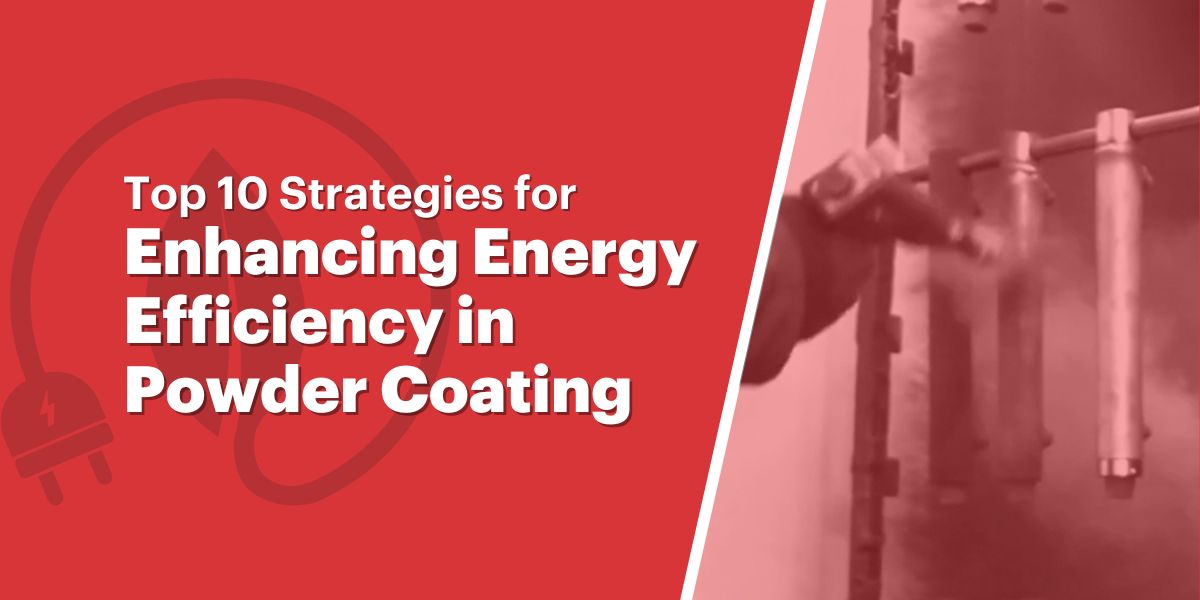Powder coating process plant is a smart move In today’s world, where sustainability and cost-effectiveness are paramount, to optimizing energy efficiency. Not only does it reduce operational expenses, but it also minimizes your carbon footprint.
Powder Coating Process
The powder coating method utilizes electrostatic processes and curing to bond the powder on the surface. As the coating requires high temperatures for setting, it’s essential that the substrate is heat resistant. Powder coating process is a dry finishing technique employed to administer a coating material consisting of finely ground particles of resin and pigment, incorporating additives for distinct functions like gloss or hardness.
The powder coating process involves applying melted powder onto a pretreated substrate surface, followed by drying and hardening, forming a protective and decorative coating. Here are 10 key strategies to help you achieve energy efficiency in your powder coating, including the use of automated technologies:
Powder Coating Process Energy Efficiency
In the powder coating process firstly, the powder requires exposure to sufficient heat to become molten when subjected to UV energy. Typically, infrared serves as the initial heat source, although convection heating is also an option. Powder coating is a comprehensive multi-step surface finishing process applicable to both metal and non-metal substrates. This method encompasses preparation, application, and curing stages, involving at least a spray gun, spray booth, and curing oven.
-
Equipment Maintenance:
Regularly maintain and calibrate your powder coating equipment to ensure it operates at peak efficiency.
-
Smart Powder Management:
Implement efficient powder recovery systems to minimize wastage and reduce the need for additional coatings.
-
Heat Recovery Systems:
Utilize heat recovery systems to capture and reuse heat generated during curing processes, thereby reducing energy consumption.
-
Optimized Conveyor Speed:
Adjust conveyor belt speeds to match the production rate, avoiding unnecessary energy consumption.
-
Energy-Efficient Lighting:
Switch to energy-efficient LED lighting within the facility to reduce electricity consumption.
-
Proper Insulation:
Insulate ovens and curing chambers to minimize heat loss and maintain consistent temperature levels.
-
Variable Frequency Drives (VFDs):
Install VFDs on equipment to control motor speeds, reducing energy spikes during start-up.
-
Advanced Powder Coating Booths:
Invest in modern, efficient powder coating booths with superior airflow control and filtration systems to minimize overspray.
-
Energy Audits:
Regularly conduct energy audits to identify areas for improvement and track progress over time.
-
Automated Technologies:
Incorporate automated systems and robotics where applicable to streamline processes, optimize powder application, and minimize human error, resulting in enhanced energy efficiency.
By implementing these powder coating process strategies, including the integration of automated technologies, you can not only reduce your operational costs but also contribute to a more sustainable future. Your powder coating plant can be both environmentally friendly and economically viable, ensuring a win-win scenario for your business and the


